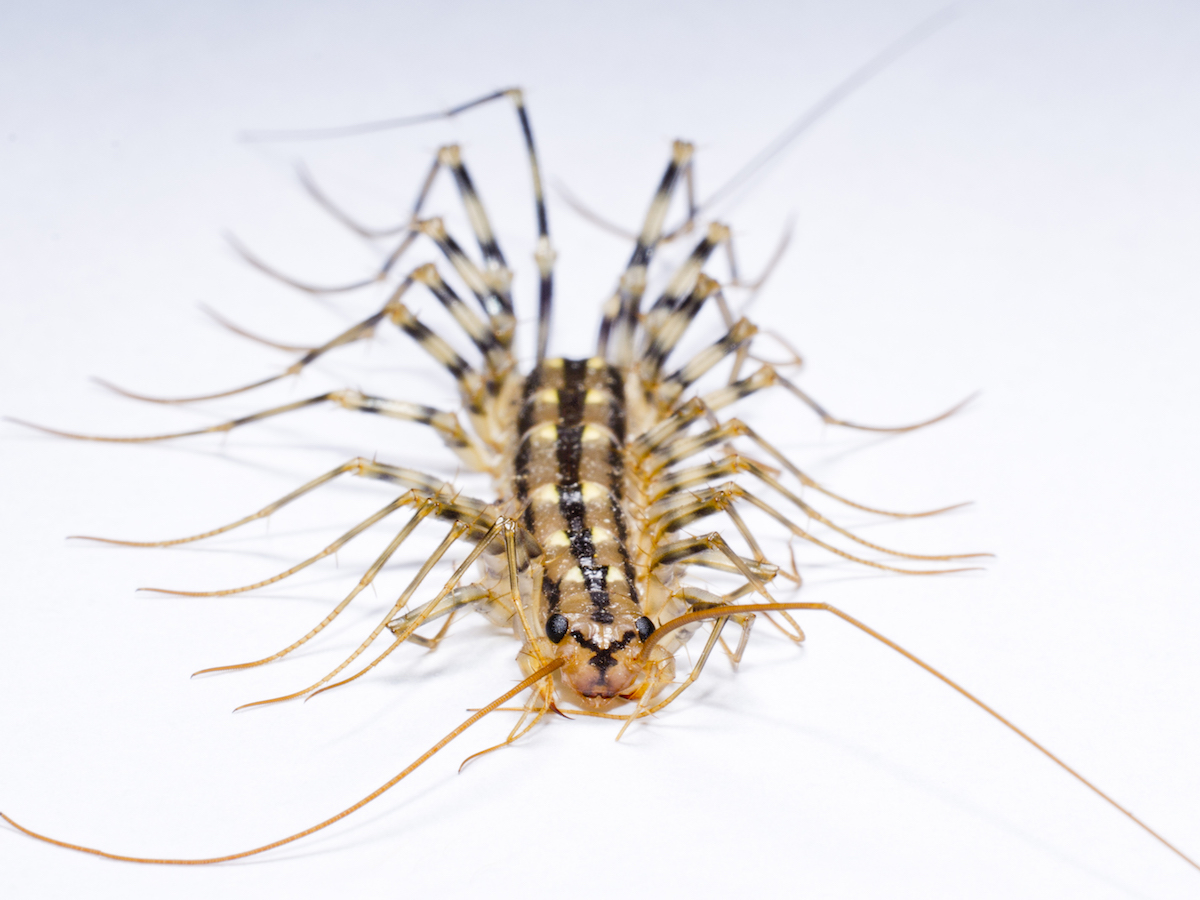Table Of Content

While their cousins, millipedes, are herbivores that feed on wood, the house centipede is a carnivore that feasts on other insects. They use their jaws to inject poison into prey, but it’s very unlikely for one to bite a human unless it was being handled roughly. If you did sustain a bite, it would feel like a mild bee sting. House centipedes don’t harm or destroy stored products, fabrics, pets, humans, or the structural integrity of your building and are generally only considered a nuisance. All house centipedes are venomous, but they typically run away from humans, and they very rarely bite.

Interaction with humans
The first thing you notice is that the house centipede has a lot of legs. The very name “centipede” hints at that since “centi-” means “hundred.” Although it looks like it has a hundred legs, the fact is that the house centipede has 15 pairs of legs. It also has two very long antenna on its head and two long appendages on it’s rear-end. Most house centipedes are yellowish-gray and have stripes down the length of their body and across their legs, too.
Centipede Pest Control
In my experience, bites from these creatures are exceedingly rare. House centipedes are naturally timid and, thanks to their small jaws, have difficulty penetrating human skin. On the rare occasion when a bite does occur, it typically results in nothing more than a small, red bump, with no significant pain or itching. House centipedes gain access to homes through cracks in the foundation and other openings. They end up in damp places, such as the basement, bathroom, potted plants, garages, or other moisture-rich nooks and crannies. They're a common household pest, and there are several species.
Gross: It's House Centipede Time in Connecticut - i95rock.com
Gross: It's House Centipede Time in Connecticut.
Posted: Tue, 18 Oct 2022 07:00:00 GMT [source]
What Kills House Centipedes Instantly?
If house centipedes become a problem, the best course of action is to seek the advice and assistance of your pest management professional (PMP). Preventing house centipedes from invading your home is an essential step in maintaining a pest-free environment. These predators can contribute to a natural balance and help reduce the number of house centipedes in your home. Newly hatched larvae (which are rarely seen) have four pair of legs. During the next five larval molts, the centipedes will have 5, 7, 9, 11 and 13 pairs of legs (Figure 2).
Seal cracks and openings
Insecticides with cypermethrin or bifenthrin can kill house centipedes with one spray. The problem is that either ingredient is potentially carcinogenic, so the cure may be worse than the disease. The sight of a house centipede can send a chill up your spine. Such a creepy-crawly can be disgusting to look at without being entomophobic, so it’s natural to feel the urge to get rid of it as soon as possible. Typical symptoms from a house centipede bite are slight pain and swelling as their weak jaws rarely allow them to break skin. The most common centipede found in the eastern part of the United States is the house centipede (Scutigera coleoptrata), which is the only species of centipede known to reproduce in homes.
You can find one near you with the helpful zip code search below. The reason for this is that leaving the centipede remains where it is may attract more centipedes. Centipedes are carnivores that will eat the remains of dead centipedes. So, get rid of their remains so that you don’t have to worry about attracting more to your area.
Post navigation
House centipedes are native to the Mediterranean region but were accidentally introduced into the southern United States. They were first recorded in Pennsylvania in 1849 and are now widespread throughout the country and the world. She is also a Master Gardener with over 40+ years of experience and 20+ years of writing experience. Mary is also a member of The Spruce Gardening and Plant Care Review Board. I've always been passionate about animals which led me to a career in training and behaviour. As an animal professional I'm committed to improving relationships between people and animals to bring them more happiness.
Common Habitats
Seal holes, cracks and gaps that enable outdoor centipedes to get inside a home. Centipedes are generally considered nuisance pests, as they do not pose significant health or property threats. However, all house centipedes have poison jaws with which they inject venom into their prey.
While they are fast and have long legs, which may frighten some people, they are harmless. House centipedes feed on small arthropods, including pest insects, so their presence in large numbers may indicate another underlying pest issue. Similar to silverfish, preventing the presence of house centipedes begins with lowering the level of humidity in your home.
Outdoors, house centipedes prefer to live in cool, damp places. Centipede respiratory systems do not provide any mechanism for shutting the spiracles, and that is why they need an environment that protects them from dehydration and excessive cold. Most live outside, primarily under large rocks, piles of wood or leaves, in barkdust and especially in compost piles. They often emerge from hiding during the watering of gardens or flowerbeds. These centipedes can be found in almost any part of the house, although they are usually encountered in dark or dimly lit areas such as basements and garages.
Its diet consists of spiders, termites, roaches, and even bed bugs. As a result, homes with moisture problems can attract these pests. Residents may see them in basements, closets, or bathrooms, sometimes even in tubs or sinks. House centipedes will prey on insects that are in the same areas.

No comments:
Post a Comment